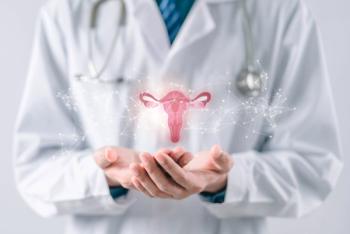
Letters to the Editor
Letters discuss global endometrial ablations, intrauterine scarring, and disagreements over cancer biomarkers. Steven R. Goldstein and Andrew John Li respond.
Why perform any procedure that can cause intrauterine scarring?
Dr. Steven Goldstein originally was against global endometrial ablations (GEA) because he found that post-ablation intrauterine scarring made it "virtually impossible" to evaluate patients who returned with abnormal uterine bleeding ("It takes a big man to admit he's wrong," April 2012).
He changed his mind after 10 satisfied post-ablation patients were referred to him by Cooper Surgical. Five had a radiofrequency ablation and 5, a cryoablation. On sonohysterogram (SIS), he found after cryoablation the endometrial cavities were extremely small and shortened but easily evaluated compared with radiofrequency ablation.
Turnbull, et al did an MRI study following endometrial resection/ablation and found that over 90% of patients had persistent or regenerating endometrium in the upper fundal or cornual area, 18% had cornual hematometra, and 54% had evidence of significant retrograde bleeding.1 If the MRI is done during the menstrual phase of the cycle, cornual hematometra, hematosalpinx, and/or significant retrograde bleeding also can be demonstrated.
We also agree that patient selection is critical. Global endometrial ablations should not be done in high-risk patients for subsequent endometrial cancer. Unfortunately, this is not fail-safe because 50% of patients who eventually develop endometrial cancer have no risk factors.
An important question is: In treating intractable uterine bleeding, why perform any procedure that can potentially cause intrauterine scarring and contracture when a levonorgestrel-releasing intrauterine system (LNG IUS) or partial endometrial ablation can successfully treat menorrhagia without causing any intrauterine scarring?
All of the above is thoroughly discussed and documented in a recent review article titled, "Long-Term Complications of Minimally Invasive Endometrial Ablation Devices."2
VANCE M. MCCAUSLAND, MD
SUTTER INSTITUTE FOR MEDICAL RESEARCH
SACRAMENTO, CA
ARTHUR M. MCCAUSLAND, MD
CLINICAL PROFESSOR, UNIVERSITY OF CALIFORNIA DAVIS, SCHOOL OF MEDICINE
REFERENCES
1. Turnbull LW, Jumaa A, Bowsley SJ, Dhawan S, Horsman A, Killick SR. Magnetic resonance imaging of the uterus after endometrial resection. Br J Obstet Gynaecol. 1997;104(8):934-938.
2. McCausland AM, McCausland VM. Long-term complications of minimally invasive endometrial ablation devices. J Gynecol Surg. 2010;26(2):133-149.
Newsletter
Get the latest clinical updates, case studies, and expert commentary in obstetric and gynecologic care. Sign up now to stay informed.










